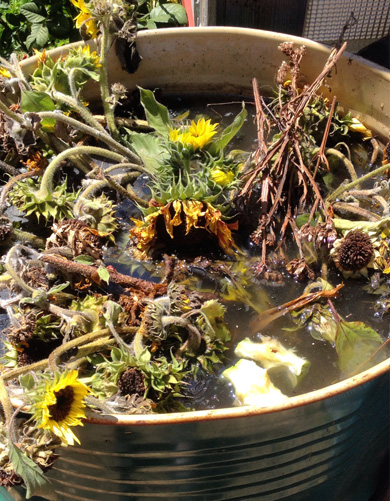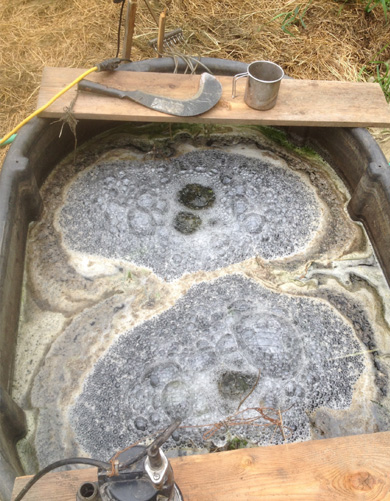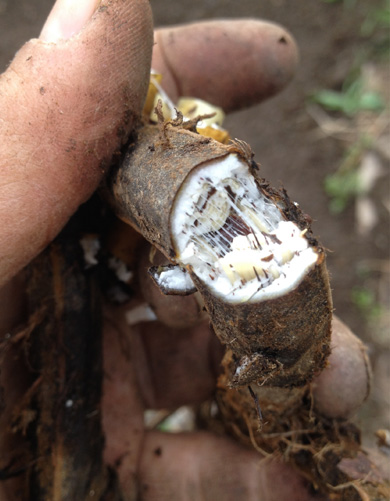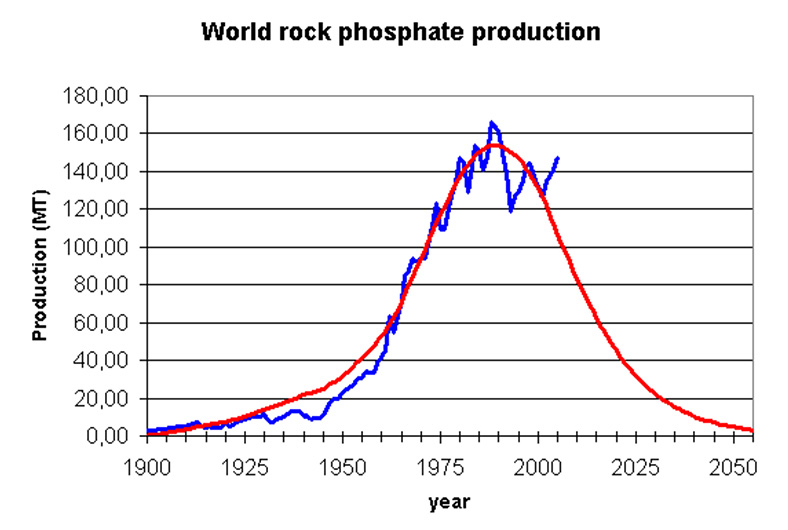


Phosphorus is a important building block to all life. It is a mineral that all living things need to have to be healthy and thriving. Peak Phosphorus (only measured in rock phosphate and old guanos) is the time when current measured commercial phosphorus resources will be at their peak of sales and use. Peak Phosphorus is supposed to take place in 2030. From that point into the future, this agricultural resources will dwindle until they are
gone. Research shows that in the next 50-100 years, the earth will be exhausted of it’s natural commercial phosphorus resources. Rock Phosphate takes 9 billion years of form and 40 more years to completely strip it out of the ground. Rock phosphate cannot be obtained without mining because it is created in a long forming
anaerobic environment. The mining process of this mineral composite is ecologically unsustainable and unsafe. Phosphorus easily leaches out of the soils and mines and creates toxic water runs off. This seeps into the water table from the mines and farms that use rock phosphate. This runoff creates a unbeneficial/ pathogenic environment wherever it pools. Drinking water becomes unsafe and lakes unswimable due to the colonization of very harmful blue algae blooms and other pathogenic colonizations. Beneficial microbial life in nature is fragile and the runoff quickly kills this healthy ecosystem which is the building block of balance.
Using plants to feed your plants is economical and wise. Responsibly wildcraft or grow your own phosphorus rich plants for
your cannabis gardens. Soft rock phosphate takes a very long time to break down. Plants can only uptake 15% of the available nutrients in rock phosphate and 85% of it gets washed out before the plants can ever use it. When you feed your garden pre-digested plants, the nutrients are totally and easily absorbed. During flowering, your plants uptake a large amount of phosphorus. Some Kush strains are huge feeders during flowering, so getting the the right nutrients is imperative for healthy plants and heavy yields.
Often, humans are more likely to do something harmful to earth simply because they have not been educated or the healthy thing would be a bit more energy and work. Nothing is easier than using a bottled nutrient. But, your flavour and smell profile will be lacking and you will be spending too much money. Why not grow the most medicinal and potent medicine that you can? Using plants will help you to grow the most fragrant, healing flowers possible. Before there was mined soft rock phosphate, there were compost piles (also very high in phosphorus) and weed teas. The soil was full of nutrients and food grown from this soil was rich with beneficial
microbes, vitamins and minerals. Unfortunately, our soils are stripped of these nutrients and replenishing them is imperative to being able to grow healthy, nutrient rich plants. If the worldwide concern is not enough phosphorus, then why not look at other sources of phosphorus and a microbial population that helps plants uptake the already available phosphorus in the soil? Adding Arbuscular Mycorrhizae to your soil (for cannabis plants you would want to add endomycorrhizae) helps the plant uptake up to 90% more phosphorus! The spore and eventually tiny tendril like fungi extensions that attach on to healthy roots go in search of available phosphorus to bring to the plant. The endomycorrhizae secretes sugars and enzymes to help breakdown the phosphorus to make it totally absorbable.


Making your own nutrients is easy. Dedicate a portion of your greenhouse, indoor or outdoor garden to growing your own nutrients. Sprout your own seeds for high phosphorus. Sprout barley, poppy seeds and sunflower seeds for high phosphorus. Close your gardening loop. This creates higher immune response and less pathogenic infections. This is true Biological Intelligence. Feeding your garden a primarily plant based diet, will increase the terpene/ resin counts. Flowers, seeds and roots contain the highest amount of phosphorus in any plant. Collect and grow plants that have large roots, big flowers and plentiful seeds. Sunflowers make great phosphorus rich teas. They grow easily, ferment easily and when they are just drooping (after you have enjoyed their beauty), throw them in the tea barrel for your ladies to enjoy. Your cannabis roots and stalks also have a significant amount of phosphorus. Use last year’s stalks and roots in this year’s flowering brew. Easy to grow perennials, cover crops and food scraps that are high in Phosphorus: Alfalfa, Apple, Asparagus, Banana, Basil, Beetroot, Black Cohosh, Blue Cohosh, Brussels Sprouts, Burdock Root, Capsicum, Cannabis stalks and roots, Caraway, Catnip, Cayenne, Celery, Chervil, Chickweed, Chillies, Cocoa, Comfrey, Dandelion, Fennel, Garlic, Globe Artichoke, Horseradish, Irish Moss, Kelp, Lettuce, Mustard, Parsley, Peas, Pineapple, Potato, Pumpkin seeds, Purslane, Pokeweed, Poppy Seeds, Raspberry, Red Clover, Rhubarb, Rosehip, Rosemary, Sage, Spinach, Strawberry, Sunflower heads, Tomato, Turkey Rhubarb Root, Watercress, White Oak Bark, Wood Betony, Yellow Dock. Use whole plants, fruits, seeds and roots in ferment to unlock valuable phosphorus.
How to Make a Phosphorus Rich Garden Brew: Collect your plants (list above) fresh and/or dry (use for indoor gardens). Chop up the plants, add half water and half plant material into a bucket or barrel. Add molasses (1 tsp. per gallon), handful of wood ash and several beneficial inoculants ( all at 1 tblsp. per gallon of
ferment. DEM Fat Flowers and Brilliant Black, A-EM (activated effective microorganisms), LAB (Lactic acid bacteria), Bokashi, sauerkraut water, miso, kefir, yogurt and 1/4 cup per gallon worm castings). These inoculant helps break down the plants and create pre-digested nutrients. Stir vigorously and then let set in the bucket, untouched and without a lid for 7 days. You will see a thick white layer of mycelial hyphae on top of the floating herbs. Then throw in a Dewey Mister and aerate for 48 hours then drench on top of your plants. Allow the sludge to slop right on top of your soil, this adds soil layers and more nutrients that can still be broken down by top soil microbes.
Letting go of the idea that all of our nutrients come in a bottle will free you to experiment, be creative and intuitive with your
gardens. Let nature be your guide for your indoor and outdoor gardens.
